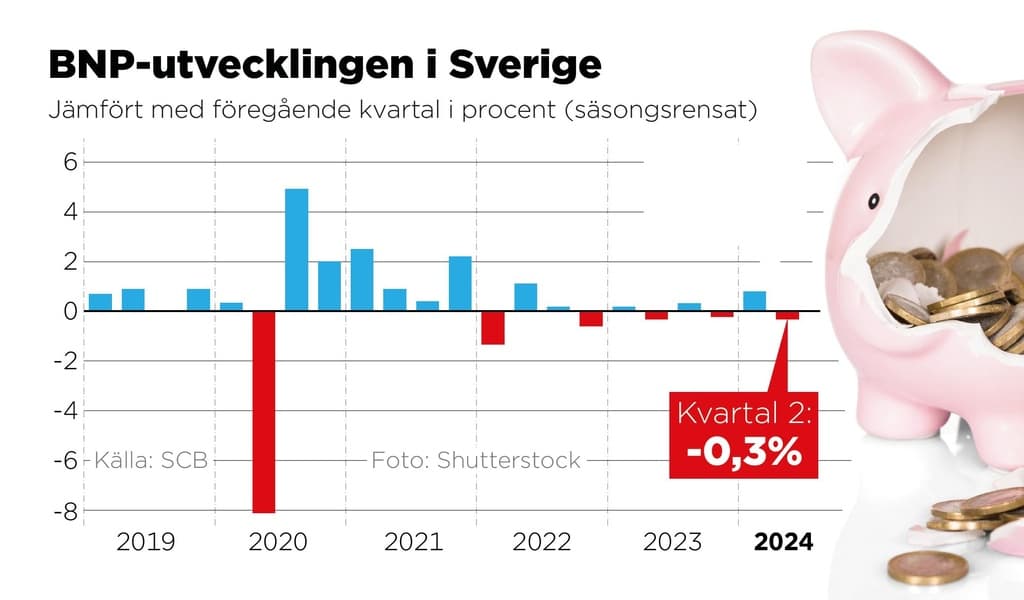The decline for the second quarter was less than feared. The analysts had expected a minus of 0.8 percent, according to a compilation from the news agency Bloomberg.
It's a weak figure, but it was still slightly better than expected, says Alexandra Stråberg.
During the first quarter, GDP increased by 0.8 percent, according to revised figures. And compared to the second quarter last year, GDP increased by 0.5 percent.
"Treading water"
According to Statistics Sweden (SCB), the decline in the economy was broad and the fall is mainly due to the industry's inventory reduction.
The Swedish economy continues to tread water and it has to do with us moving sideways. It goes up and down between months, but we don't see a clear turnaround yet.
On Thursday, the National Institute of Economic Research (KI) also presented its business cycle barometer, with small changes. The indicator decreased from 94.9 to 94.7 in August. KI notes that it "remains at a gloomier mood than normal".
Tough for the labor market
Do these signals affect the Swedish Central Bank in any way?
This is no news to the Swedish Central Bank, they know we're in a low-growth economy. The most important thing for the Swedish Central Bank is that inflation continues to be below target, and then they can continue to lower interest rates, says Alexandra Stråberg.
Even if the low-growth economy persists, a brightening is seen ahead.
It's about falling interest rates and real wage increases, the wallet will feel thicker ahead.
It's tougher, however, for the Swedish labor market.
The labor market is the area that continues to have it really tough and will continue to have it a bit tough ahead even when it starts to brighten, says Alexandra Stråberg.





